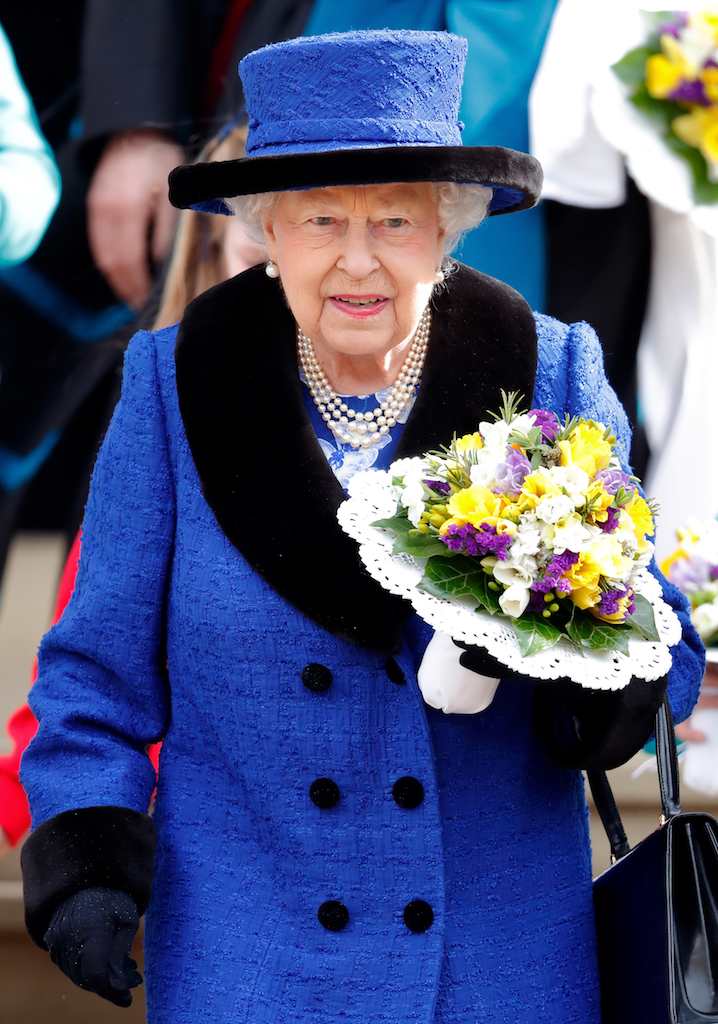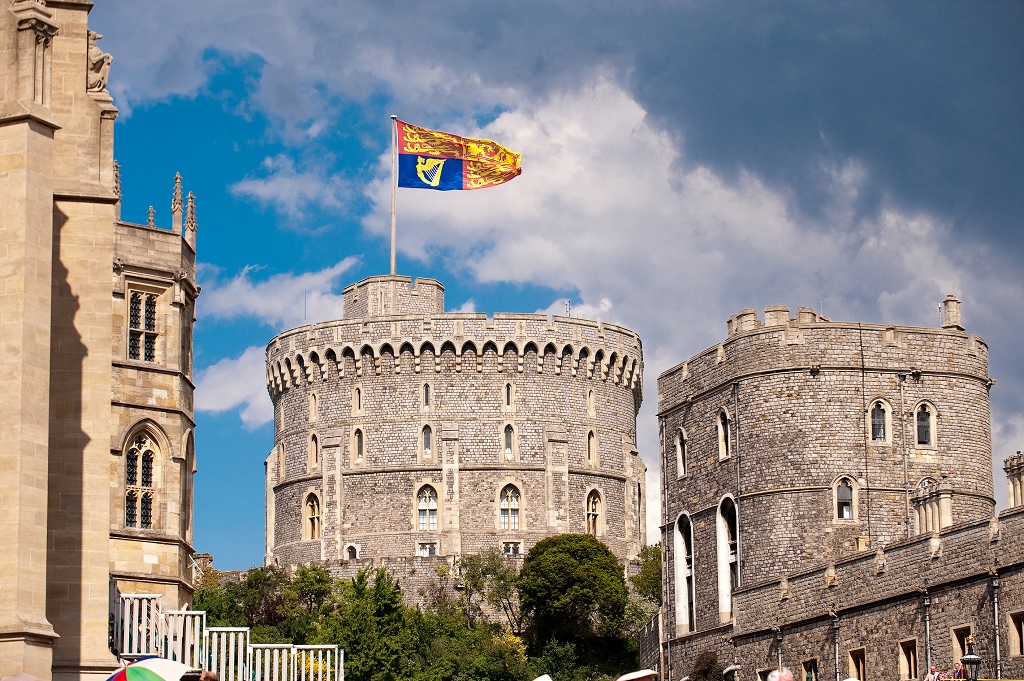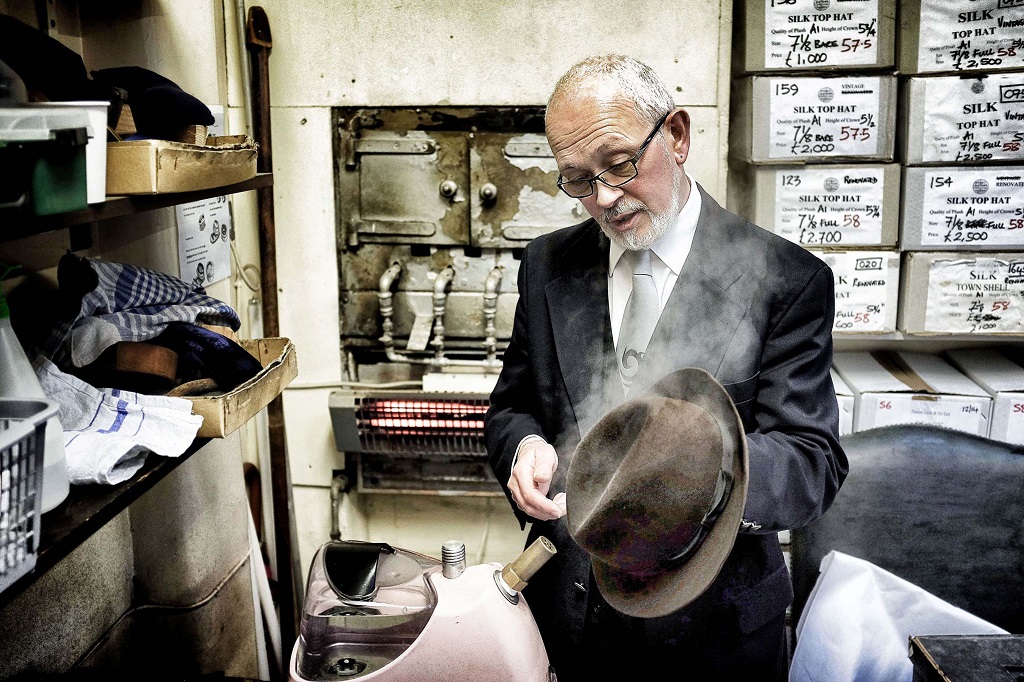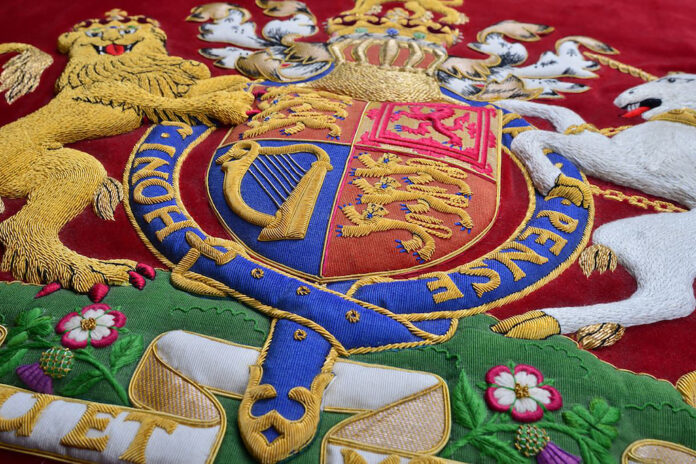Fancy sharing suppliers with the Queen? From flagmakers to florists, the Royal Warrant Holders are an eclectic group. We find out more about this centuries-old tradition
Words: Emme Ledgerwood
Once a year, florist Rosemary Hughes gathers together a heady recipe of daffodils, freesias, stocks and herbs. She creates a dozen exquisite nosegays for the most important client on her books, Her Majesty The Queen. These small, perfumed bunches of yellow, violet and white are the traditional nosegays carried by royalty and clergy at the pre-Easter Maundy service where the Queen presents ‘Maundy money’ to retired pensioners from across the country, chosen for service to their communities.

“It’s a tradition that goes back over 800 years,” says Hughes, who holds a Royal Warrant as Supplier of Nosegays. “You make every effort for The Queen as it’s a big honour. It’s an accolade you never dream of getting when you start out as a Saturday girl in a florist’s shop.”
As a warrant holder, Hughes belongs to an eclectic group that represents a huge cross-section of trade and industry, ranging from traditional craftspeople to global and multinational firms operating at the cutting edge of technology.
Only individuals or companies that have supplied goods or services for at least five years to HM The Queen, HRH The Duke of Edinburgh or HRH The Prince of Wales can apply for a warrant through the Royal Warrant Holders Association (RWHA), which advises applicants on the process.
Those five years are crucial to the establishment of a good working relationship and are also an effective way for the Royal Household to observe whether the company demonstrates its ability to deliver to the exacting standards required. Since 2012 all Royal Warrant holders have also been obligated to complete an environmental and sustainability audit, a requirement first introduced by the Prince of Wales.
Once granted, the holder of a Royal Warrant is entitled to display the relevant Royal Coat of Arms and the legend ‘By Appointment’ on their products, premises, stationery, vehicles or advertising.
It’s a tradition that dates back to the 15th century. William Caxton, inventor of the printing press, was one of the first recipients, becoming the King’s Printer to Edward IV in 1476. Everything from crowns to cutlery has appeared on the sovereigns’ shopping lists over the centuries, but some of the orders have changed over time. Unlike Henry VIII, the present Queen doesn’t have a supplier of “Swannes and Cranes, price the piece two shillings”, nor we imagine does she give her Purveyor of Fish “£10 a year for ‘entertainment’ plus £22.11s.8d. for losses and necessaries”, as did Elizabeth I.

The 18th century saw warrants issued to royal rat-catchers, mole-takers and bug-takers. Later, Queen Victoria revived the tradition, with over 2,000 businesses receiving the accolade during her reign, including Twinings tea merchants and royal grocer Fortnum & Mason, who still hold the seal of approval today.
Other companies have had the privilege of displaying the legend for even longer, such as Firmin, the button and insignia maker, or wine merchants Berry Bros & Rudd, who both began supplying the Royal Households during the reign of George III.
Others are London institutions, such as Lock & Co Hatters in St James’ Street or the fragrance house Floris. Recent recipients include pet food manufacturer Lily’s Kitchen – suppliers to Prince Charles’s dogs Beth and Bluebell – and Hand & Lock, embroiderers of the elaborate uniforms of Her Majesty’s Body Guard of the Honourable Corps of Gentlemen at Arms.

The majority of warrant holders are small- to medium-sized businesses, and many are family-run or owner-managed, whose relationship with the Royal Households often starts through word-of-mouth recommendations. Whatever their background, they are obliged to operate according to the Lord Chamberlain’s Rules and maintain absolute discretion about their royal customers. Warrants are reviewed by the Lord Chamberlain’s Office a year before they are due to expire.
The rules also stipulate how and where the grantee can display the crest, to stop companies drawing undue attention to the warrant. The warrant denotes reliable, consistent service and quality of products. It does not necessarily mean that the firm is the best in its field; it just indicates that it is one the Royal Family prefers to use. Warrant holders provide a cross-section of services and goods that any modern family would need, as well as a modern business.
But while the 800-strong band of warrant holders includes the plumbers, TV engineers and building contractors that visit every home across the country, no ordinary family needs a stonemason or a racing photographer on a regular basis. From ceremonial robe makers to waste disposal contractors, from livestock transporters to fine art dealers, from luxury car manufacturers to panel beaters, the Royal Households use them all.

“The Royal Family are looking for products that are well-priced, superbly made and to the standards they require,” says Andrew Ormrod, managing director of Flying Colours Flagmakers, which manufactured the UK’s largest Union Flag. Measuring 38’ x 19’,
it flies from Windsor Castle. “They need a whole arsenal of flags for their properties and cars, but we also repair and mend flags for them – they do not waste money, they are extremely careful.
It’s a joy to make them for the Royal Family. It gives the workforce massive satisfaction.”
“We’re immensely proud to be warrant holders,” says Greg Rowland, Master Wheelwright. He makes about 300 wheels a year for carriages, carts, drays and cannon with his father Mike, also a Master Wheelwright and coachbuilder. They are the only father and son Masters in the world. “If something from the Palace comes in, our other customers know they’ll have to take second place! It can lead people to think you’re expensive, but that’s not the case. What it does is signify that you have a proper grasp of your trade, and that everything that comes out of your workshop has to be of a certain standard. The Queen relies on the warrant holders to preserve traditional standards.”
Christine Palmer, director of Carvers and Gilders, has had a similar experience as a warrant holder. Her company specialises in the conservation and restoration of carved, gilded furniture and mirrors, but also takes on new commissions. Christine has worked on a variety of pieces for the Royal Family. “It’s very nice for small, specialist businesses to be recognised and valued for their expertise and dedication. We take training very seriously to ensure that our skills are not lost and that we continue to cover a wide range in-house.”
Cornelia James have been making gloves in Sussex since the 1950s and have been Royal Warrant holders since 1978. “It’s hugely important to us,” says Genevieve James, daughter of the late Cornelia. “It’s great for morale. We’re a small team and everybody who works here feels that it’s really special.” The Royal Warrant is universally recognised as a mark of excellence and integrity. “Every glove that we make has to measure up to that standard.”

For Kevin Giddings, chimney sweep, receiving the warrant has marked the pinnacle of his career. He has built up his business to include a team of 20 sweeps that now service all the palaces in central London. “I saw Mary Poppins once too often when I was a boy. A lot of family-run businesses help the Royal Family run their life and I feel very privileged when I go to Buckingham Palace.” Receiving the warrant has opened up a completely new world for him. “I love being a grantee, and especially some of the privileges that can go with it. As president of the local Windsor association, I went to the Knights of the Garter service at St George’s Chapel – one and half hours of pomp and ceremony. One of the most wonderful things was going to a garden party at Buckingham Palace. One couldn’t have a better accolade.”






 © 2024
© 2024